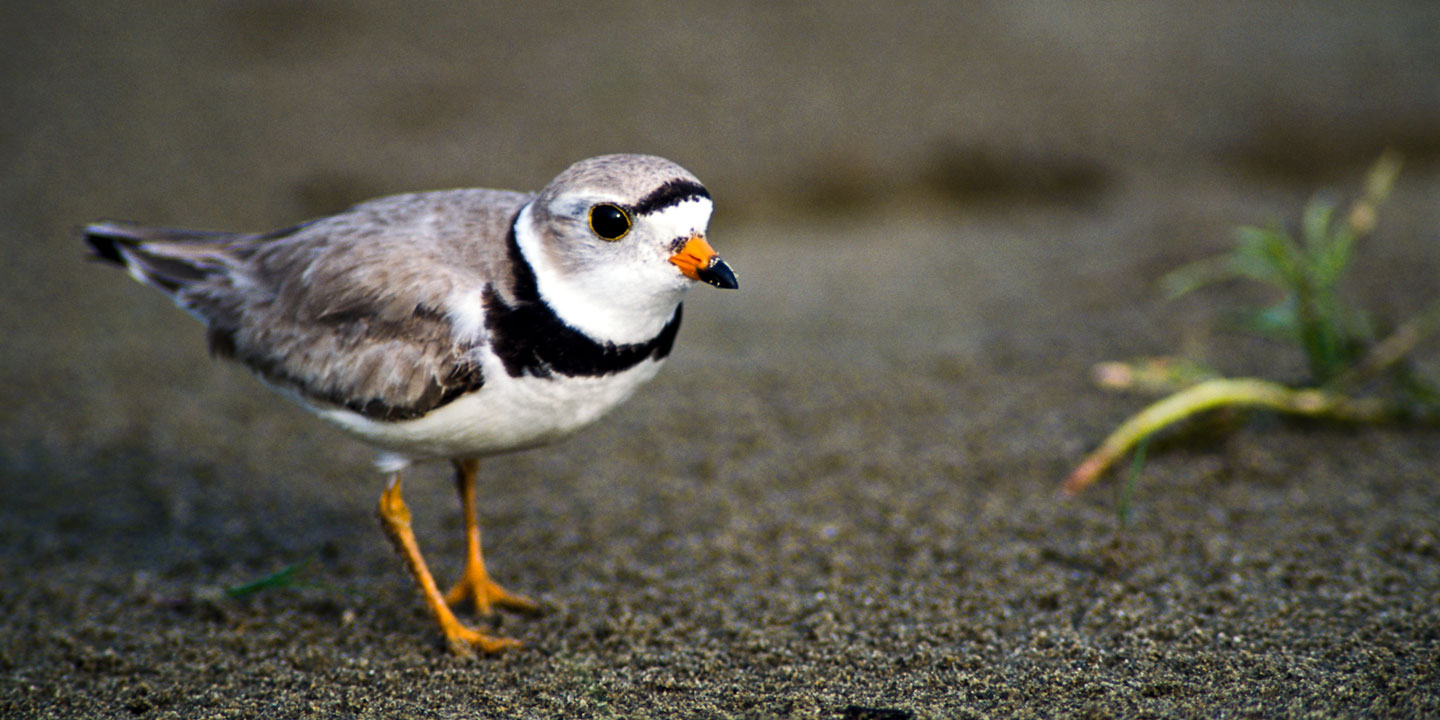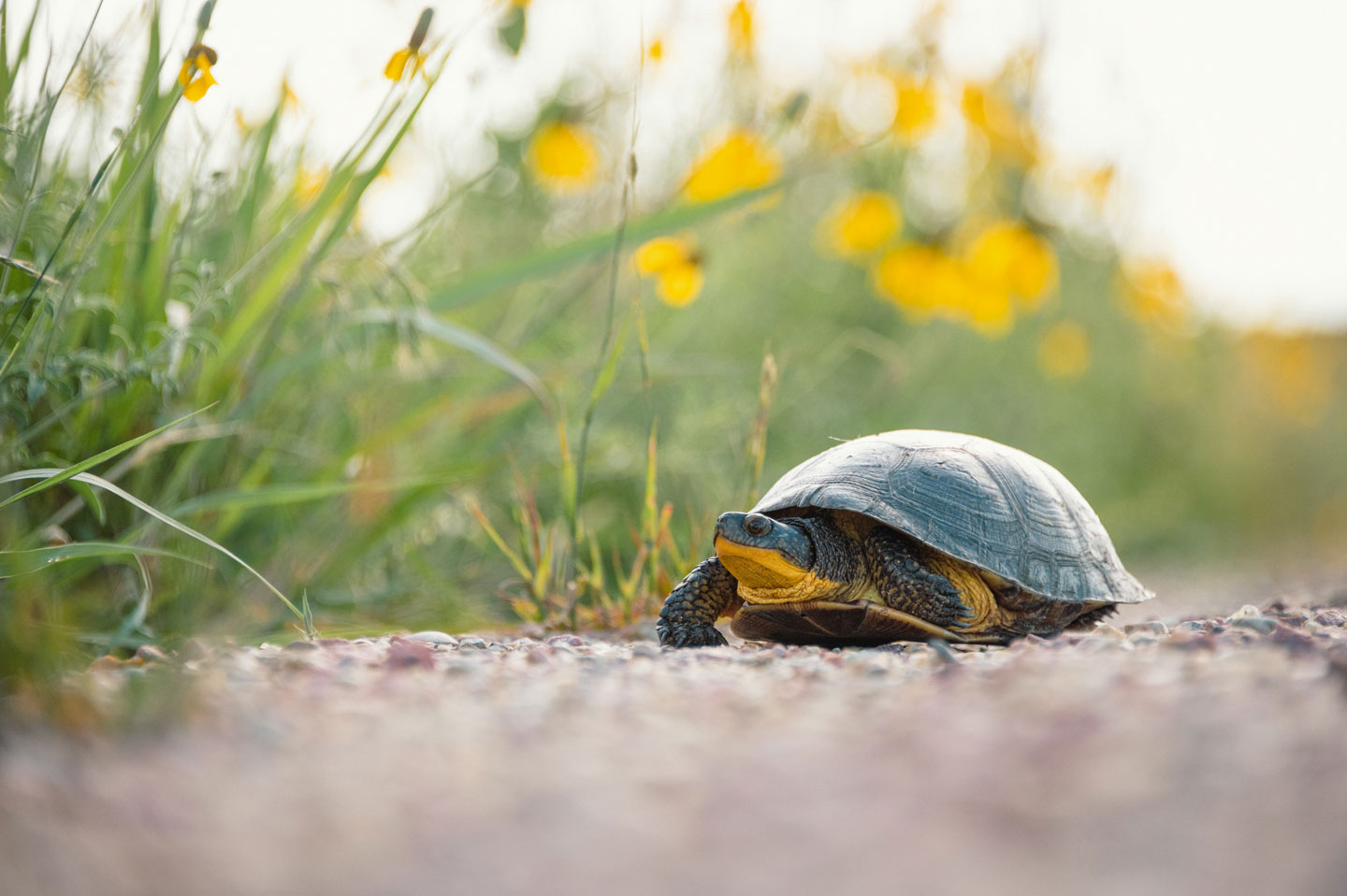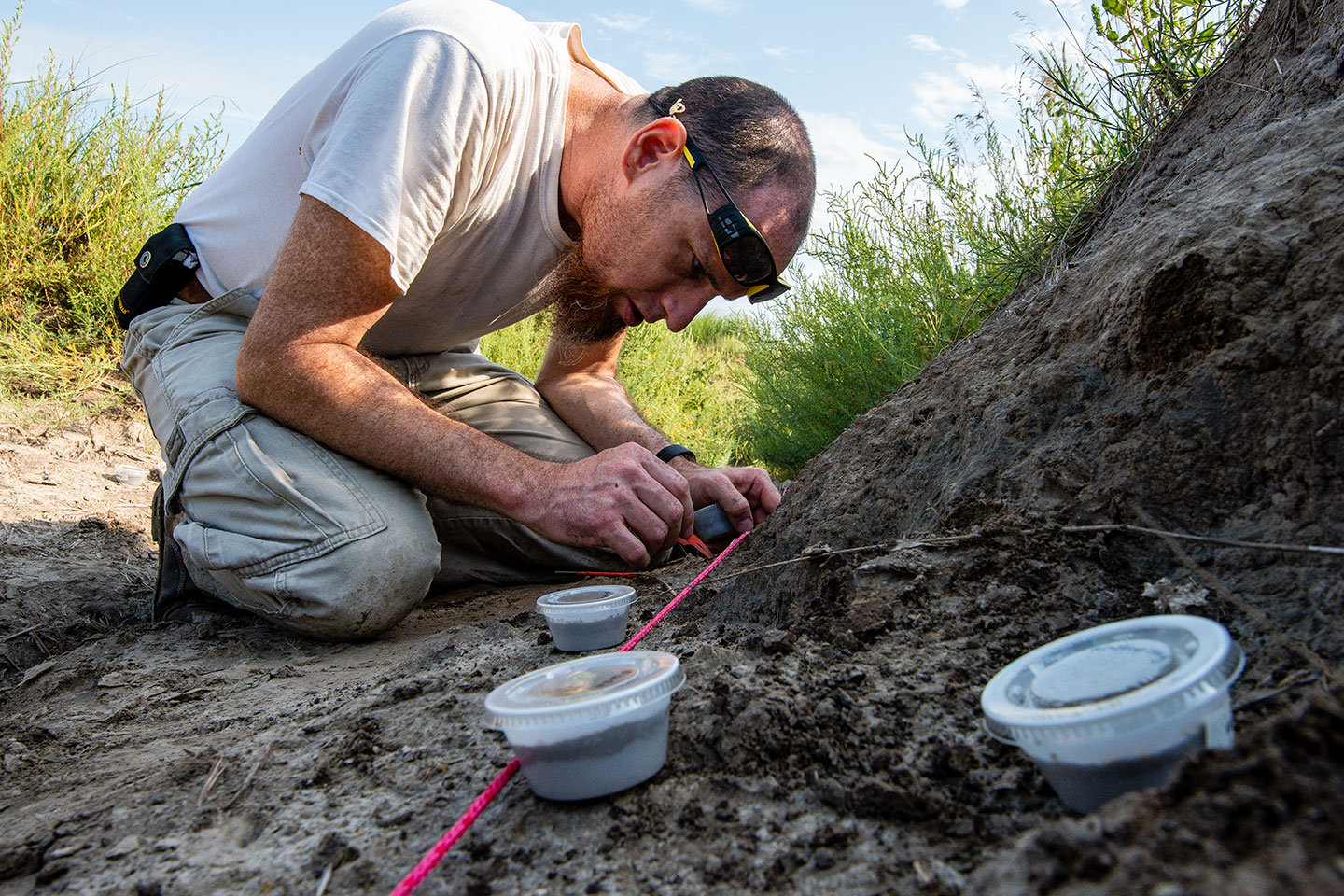Piping plover
Status: Threatened

The piping plover (Charadrius melodus) is a migratory shorebird with a length of about 7¼ inches and a wingspan of about 19 inches. These plovers are small sand-colored birds with white undersides and orange legs. During the breeding season, adults develop an orange bill with a dark tip, and a single black forehead band and breast band. Non-breeding and immature plovers do not have the dark bands on their forehead or breast and instead have an all-black bill.
Piping plovers are often mistaken for killdeer (Charadrius vociferus). However, killdeer have two breast bands, a dark brown back, and are larger and louder than piping plovers. Piping plovers are very specific about their nesting areas, so it would be very unlikely they would be found nesting in gravel parking lots or urban areas where killdeer are found.
Range
There are three separate populations of piping plovers in North America. The Great Lakes population breeds along sandy shores of the Great Lakes; the Atlantic coast population breeds along ocean beaches, sand pits and dredge spoil piles along the Atlantic shore; and the Northern Great Plains population nests along prairie rivers and wetlands from Alberta to Ontario and south to Nebraska. In Nebraska, piping plovers breed along the Missouri, Platte, Elkhorn, Loup and Niobrara rivers.
Piping plovers only spend three to four months on their breeding grounds; the other eight to nine months are spent on their wintering grounds along the Gulf of Mexico and southern Atlantic Coast.
Diet
Piping plovers prefer to forage in moist substrate along waterlines or within mudflats. Their prey consists primarily of small insects and other soft-bodied invertebrates. In addition, they opportunistically take prey from drier areas. Chicks can feed themselves within hours of hatching and eat the same prey as adults.
Habitat
Historically, piping plovers have nested on sparsely vegetated river sandbars, lakes and beaches. Today, they also nest on manmade sand and gravel mines, sandpit housing developments and reservoir shorelines. As these plovers nest on the ground, areas that are flat with no vegetation are preferred so the birds can easily detect predators. Even more preferred are sandbars, which offer increased protection from mammalian predators that are deterred by the need to swim. Foraging habitat for these birds can be found along shorelines or mudflats that contain small invertebrates.
Reproduction
Piping plovers arrive in Nebraska in mid- to late-April. The males conduct elaborate courtship rituals, including aerial displays of circles and figure-eights, whistling songs, posturing with spread tail and wings and rapid drumming of feet.
Females lay their eggs in simple depressions or scrapes in the sand that are often lined with small pebbles. The typical clutch size is four eggs. Both adults share the responsibility of incubating the eggs throughout the 27- to 31-day incubation period. Piping plovers will re-nest several times if their eggs or young are predated, but typically only one brood of chicks is raised each year.
Piping plover chicks leave the nest about two hours after hatching and are able to feed themselves within a few hours of being out of the nest. The chicks blend into their surroundings very effectively because of their camouflaged plumage.
Predators of piping plovers include Great Blue Herons, crows, gulls, skunks, raccoons, red foxes, coyotes and feral cats and dogs. When a predator approaches the nest, adult plovers will fake injury to draw intruders away from the nest or chicks. This defense behavior is continued until chicks can make sustainable flights.
Piping plovers fledge (are able to fly) at about 21 to 28 days. Adults usually leave their breeding grounds shortly after chicks fledge, by early August. Juvenile piping plovers depart a few weeks later.
Population status
Since the early 1900’s, habitat loss and destruction from channelization, irrigation and the construction of reservoirs on our nation’s large river systems (such as the Platte and Missouri) make up the primary reason for piping plover population decline. The piping plover was listed as a federally threatened species in 1986 and is currently a state and federally protected species.
Because there has been continued loss of suitable river sandbar habitat and increased availability of sandpit habitat, many piping plovers have transitioned from using sandbar habitat to sandpit habitat over much of their range in Nebraska.
Today, piping plovers are still facing threats of human disturbance, continued habitat loss, pollution and contaminants on their breeding and wintering grounds, disease and predation.
Management and outlook
Nesting birds continue to be monitored and protected in Nebraska. Conservation efforts include flagging nesting sites in sand and gravel mines to ensure the nests are not destroyed. Additionally, fencing is occasionally placed around nests to protect against predators.
Other efforts to conserve piping plovers include educating the public about the species. Much effort has also been made to restore, create, protect and manage important river habitats. Biologists that study piping plovers use a technique called “capture, mark, release” in which they capture the birds, measure and weigh them, then mark them with a colored leg band. These leg bands are to help wildlife biologists better understand plover movements on both breeding and wintering grounds.
Conservation help
Individuals can help conserve piping plovers by reporting nesting sites to the Nebraska Game and Parks Commission, as well as not disturbing a nest once it is found.
Additionally, people can help by donating to conservation organizations dedicated to protecting threatened and endangered species. These donations provide funding for needed research, habitat improvement projects and education.
References
United States Fish and Wildlife Service. 1988. Great Lakes and Northern Great Plains Piping Plover recovery plan. Twin Cities, MN. 160 pp
Wilcox, L. 1959. A twenty year banding study of the Piping Plover. Auk 76:129-152.
This pamphlet, is one of a series of pamphlets about Nebraska’s rare species. To learn more about Nebraska’s rare species, please visit rarespecies.nebraska.gov.
Copyright 2013. Published by the Nebraska Game and Parks Commission with funds from the Nebraska Environmental Trust.
NOTE: New data of the occurrence and distribution of this species are being collected constantly and some of the information in the pamphlet may be outdated. The information in this pamphlet should be used for a general understanding of the species and not as the sole source of range location for any report, project, regional or local planning, or for environmental impact assessments. For current information on this species, please contact the Nebraska Game and Parks Commission, Wildlife Division.




